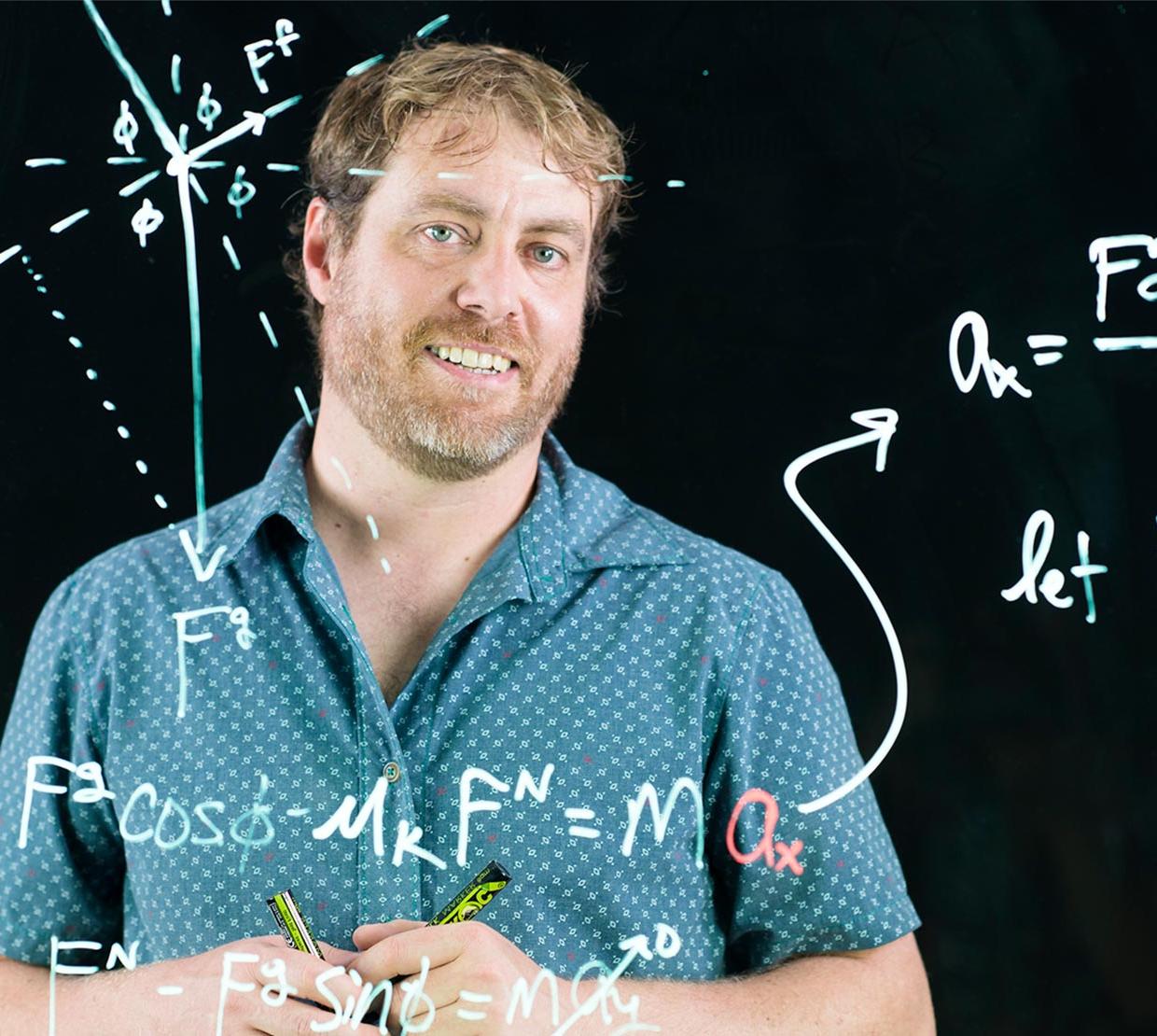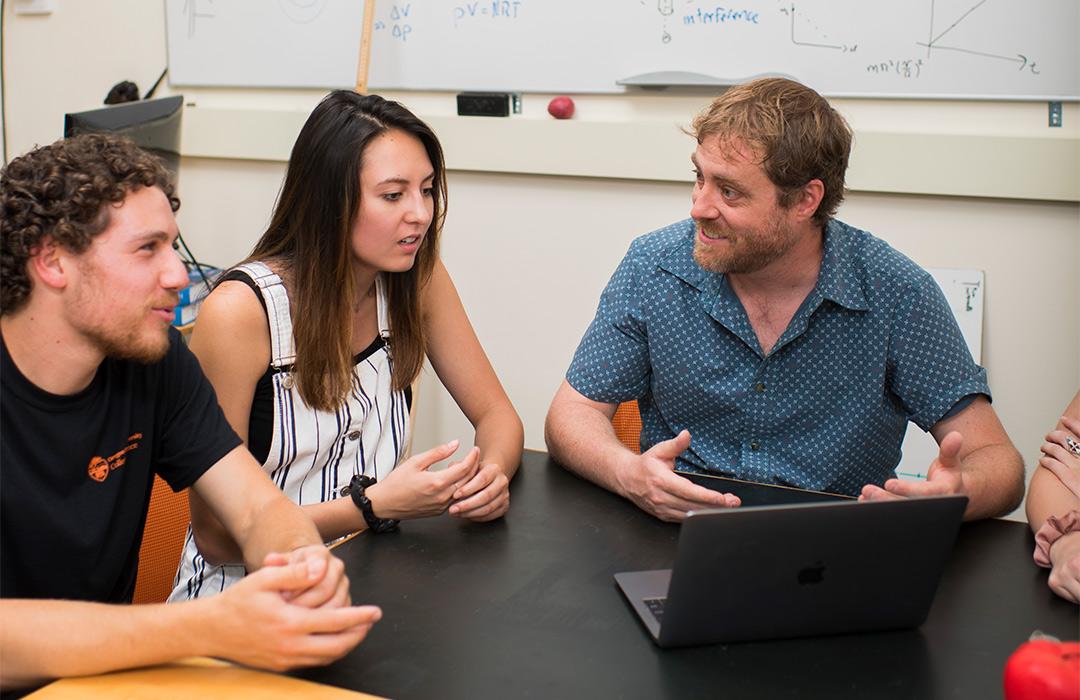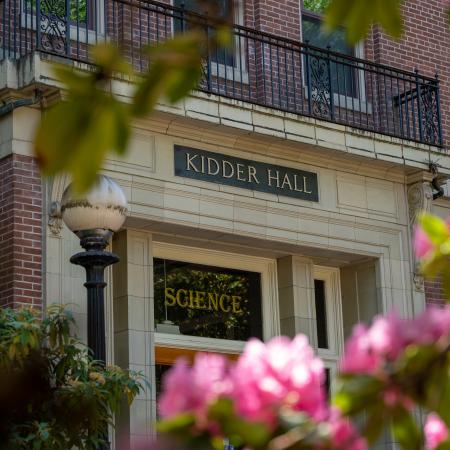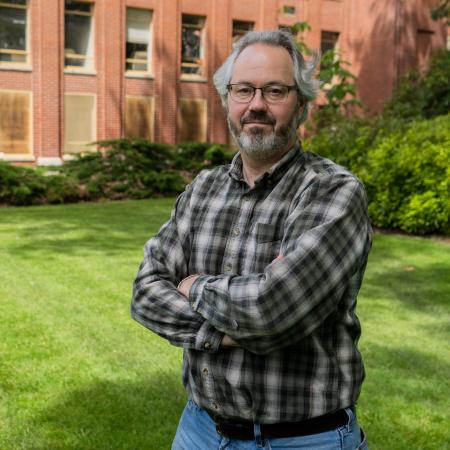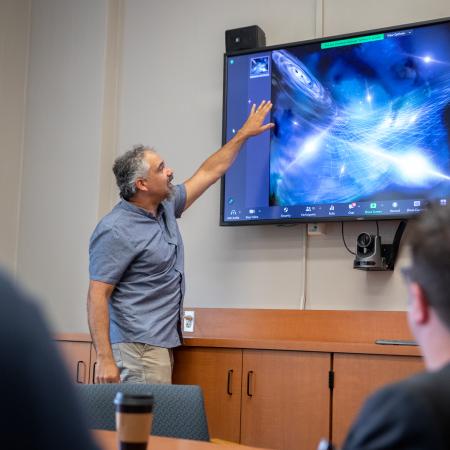Following the tremendous success modernizing the curriculum in the Introductory Algebra-based Physics series, instructor KC Walsh and a team of faculty members and students have designed a fully online version of the flipped classroom curriculum. The sequence went live this fall.
Five years ago, Walsh transformed introductory physics classes at OSU by reversing the traditional learning environment. In flipped classrooms, students receive course content online outside of the classroom, freeing up “precious classroom time” for active learning. Research shows active learning to be a far more effective way to learn and understand the material.
“The flipped classroom model is a student-centric classroom model where the attention is on the students rather than the instructor,” Walsh said. “Much of physics education research for the past 30 years can be summarized into two major statements: Students learn best by actively engaging in problem-solving and critical thinking; and they learn physics best by talking with peers, guided by experts.”
The results of the flipped classroom model were dramatic, leading to a marked increase in course satisfaction and a change in the drop-fail-withdraw rate from 36 percent to only 12 percent – all without decreasing learning gains. “That’s a huge difference. That means that we’re passing 25 percent more students,” he said.
